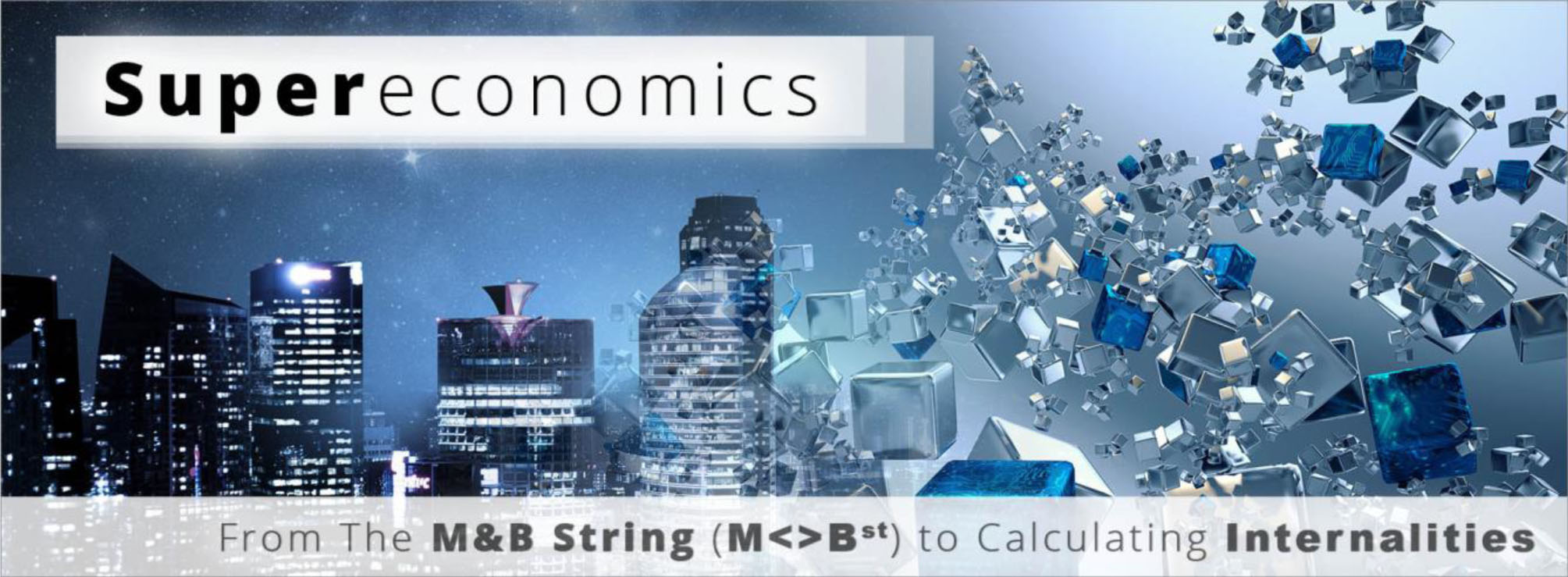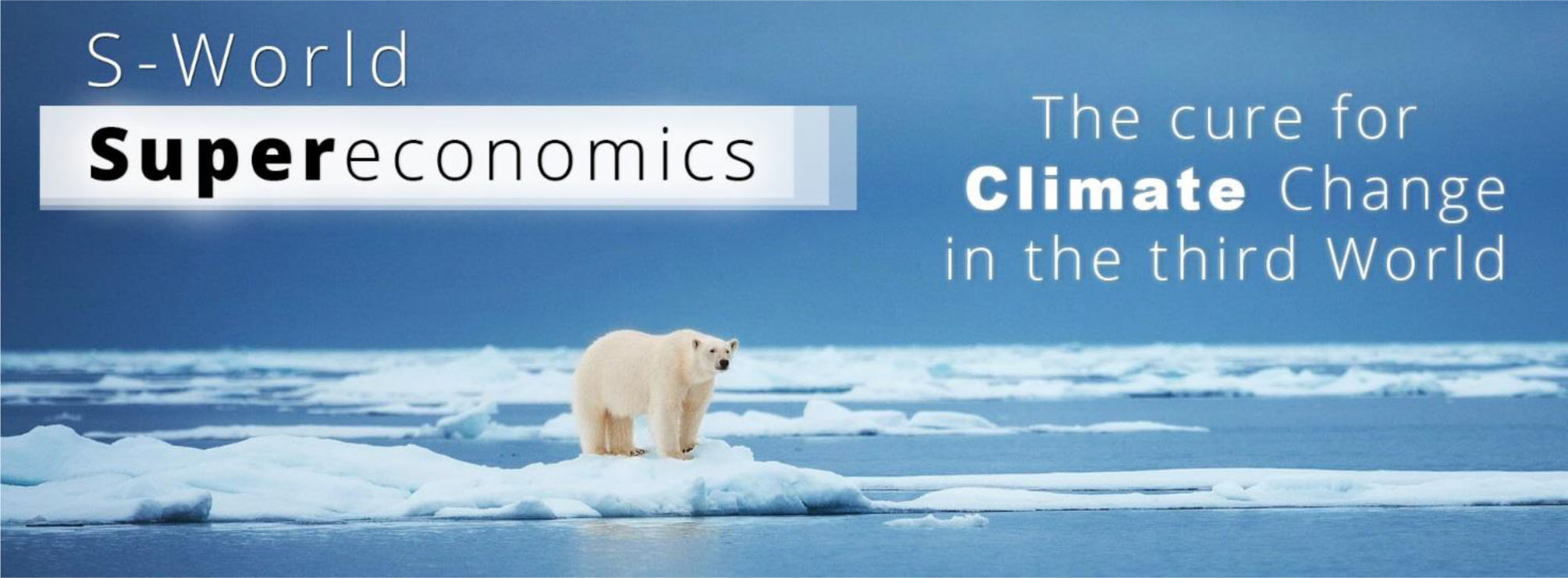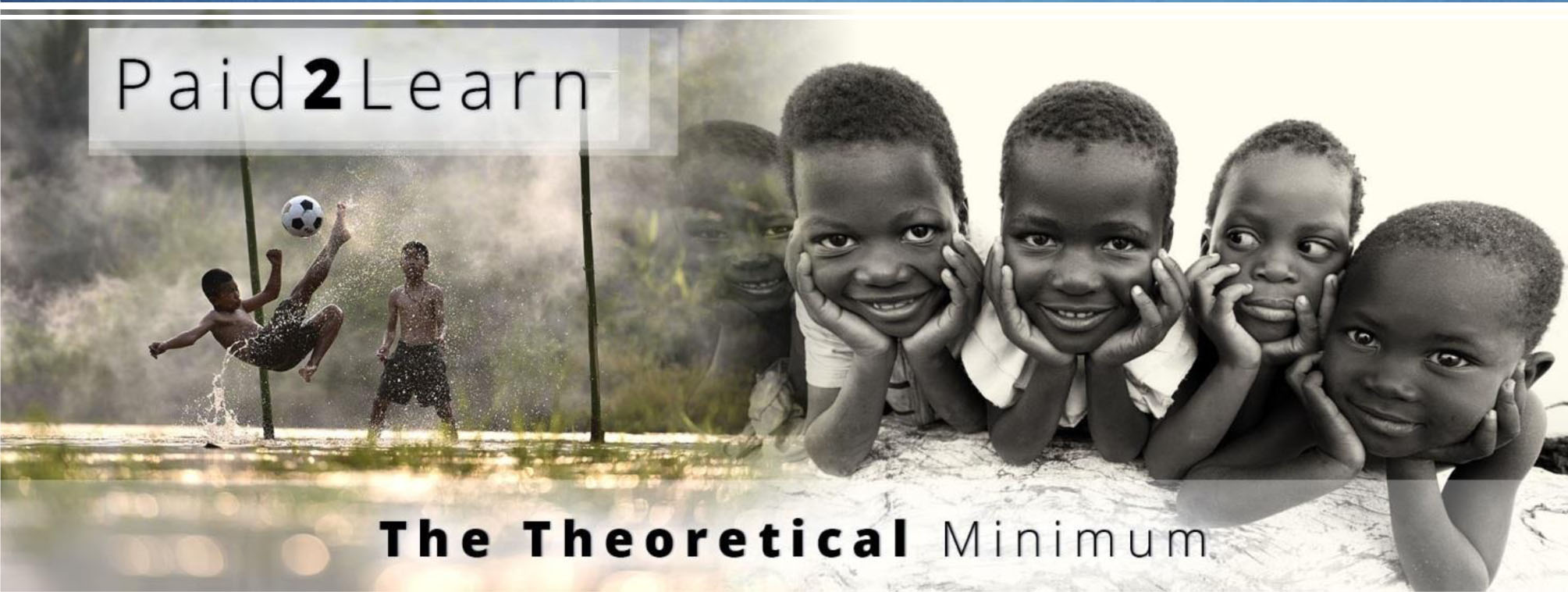Supereconomics 3
Sixty-Four Reasons Why
Summary
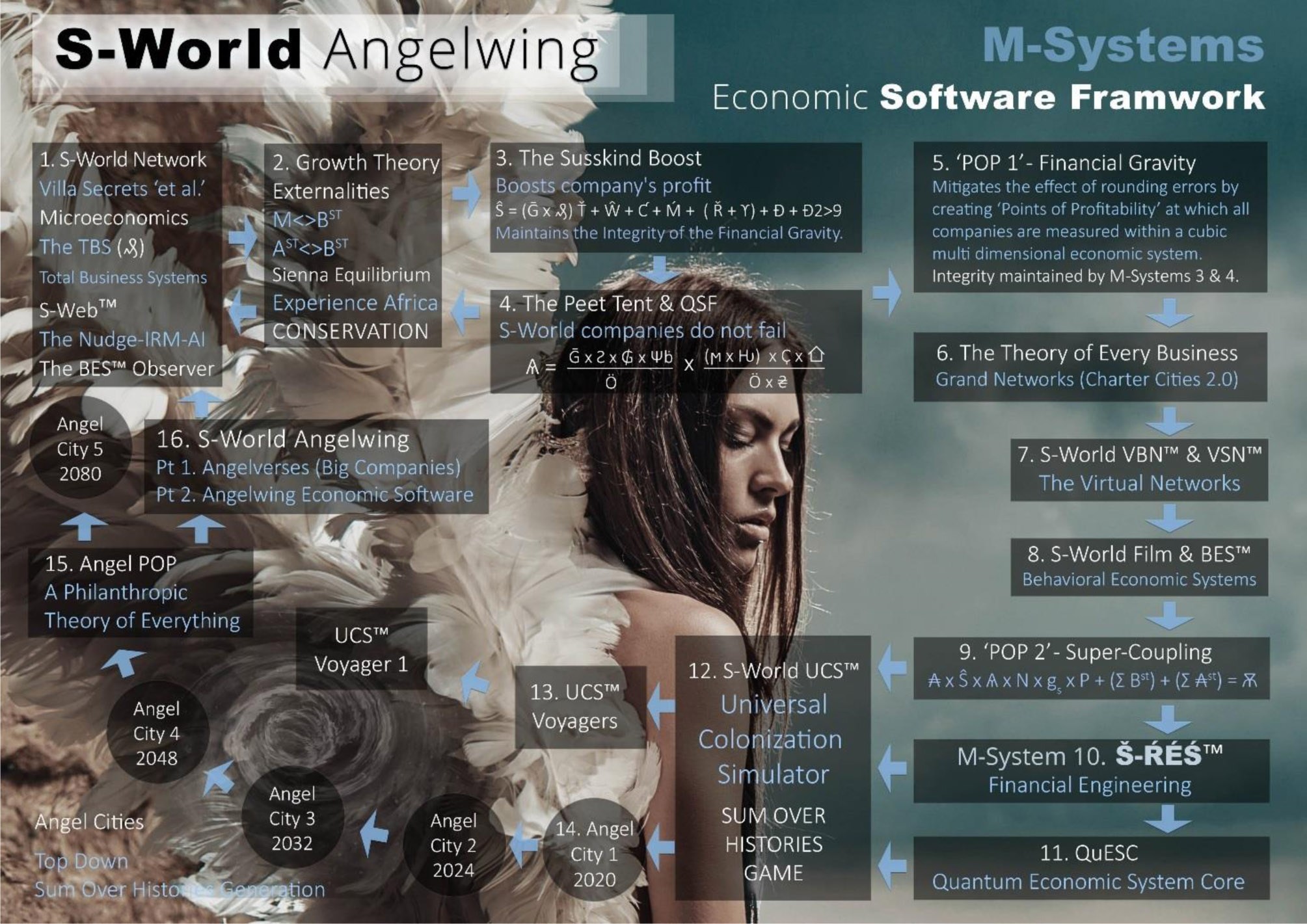
The software and systems needed to create
Net-Zero Cities in locations of extreme poverty
V1.10b – 24th February 2020
Welcome to
Supereconomics 3
Sixty-Four Reasons Why
Summary
This project: The S-World Hypothesis and Network were started in February 2011. It’s 11 volumes contain over one million words, thousands of graphics, hundreds of spreadsheets spanning 6,700 pages.
The complete book ‘Sixty-Four Reasons Why’ is currently 78,000 words on 382 pages. This summary is 22,130 words on 135 pages.
The graphics make for a very quick summary. Please have a quick browse of them, and in a handful of minutes, you will have an overview
After the quick browse
Please read the 850 words from page 17 to page 21
and watch the video:
www.angeltheory.org/video/34b (and 34a & 34c)
Š-ŔÉŚ™ Financial Engineering
Index
PART 1. The What
- 3a. S-World Angelwing – Introduction
- 3b. S-World AngelWing Software (& Economic Framework)
- 4. Special Projects Allocations
PART 2. The HOW
- 5. Š-ŔÉŚ™ Financial Engineering
- 6. Monopoly Power in the Quantum Age (The Super-monopoly)
- 7. Poor Economics
- 8. The 8th Way for Kate Raworth
- 9. “How can we Accomplish as Much Good as Possible?”
PART 3. A Good Model
- 10. The S-World UCS™ M-Systems
- 11. 87 Quintillion Histories
- 12. MARS Resort 1
- 13. POP – Financial Gravity: Cubic Dimensions (Ð1 to Ð21)
- 14. Net-Zero DCA™ Soft. Dynamic Comparative Advantage for Joseph Stiglitz
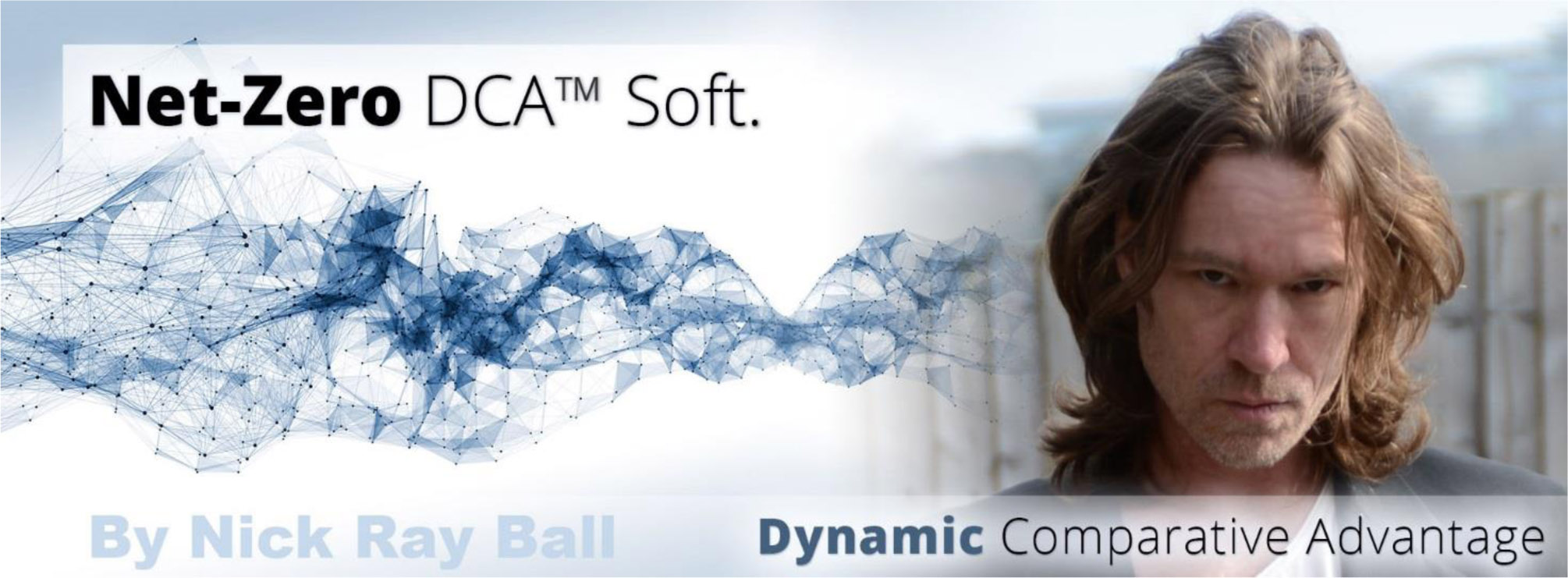
- 15. The Malawi Grand Śpin Network 2025
- 16. The Future of Capitalism – Paul Collier
- 17. Monopoly versus Anti-Trust
- 18. Climate Change and the Carbon Traffic Lights idea.
- 19. EEE (ecological) Points & Demerits
- 20. A Good Model
PART 4. Internalities & Net Zero DCA
- 21. POP – A Good Model
- 22. Ripple Effects and Elephants for Paul G. Allen
- 23. From the M&B String (M⇔Bst) to Calculating Internalities
- 24. Complete Book Index
PART 5 – Special Projects (THE WHY)
- 25. 64 Illustrated Reasons Why
- 26. Stockholm Resilience Centre – The Nine Planetary Boundaries
- 27. United Nations | Sustainable Development Goals 2019
- 28. Special Projects 1 to 32
- 29. Special Project 33. Growth Theory versus Climate Change
- 30. The Elephant in the Room
- 36. Special Projects 34 to 71
- 37. Commanders Intent & the QuESC Battlestar
- 38. Special Project Allocations (Complete Set of 64)
- 40. Welcome to S-World – Sienna’s World – The Sienna Foundation
Supereconomics – Book 4 (Preview)
- 41. S-World VSN™ (Virtual Social Network)
- 42. S-World UCS™ – Universal Colonization Simulator
- 43. Š-ŔÉŚ™ Financial Engineering on MARS Resort One
- 44. Nanos gigantum humeris insidentes
Stop trying to save the world all by yourself.
“The very idea that we, as atomized individuals, could play a significant part in stabilizing the planet’s climate system or changing the global economy is objectively nuts.”
From: On Fire – The (Burning) Case for a Green New Deal by Naomi Klein
But in the case of climate change, it is possible, Greta Thunberg, for instance. And in the case of the global economy – read on…
This book then, is super-nuts, super-crazy-macroeconomics, economically transforming the world’s poorest county not with billions of dollars on net-zero solutions but with trillions, and across the world, potentially hundreds of trillions. And yet, as best I can see it is mathematically sound, 18 months of solid testing a simple four-character equation has let me see it from many perspectives.
This is not a book about policy or corporate responsibility; it’s a book about how to build countries. We can’t ask the poorest countries in the world to consume less, because global consumption is way too high, it will lead to higher populations creating new homes in slum cites where their children play is open sewers, and almost all power and heat comes from burning coal or other fossil fuels. This book then; ‘Sixty-Four Reasons Why’ describes a superior digitally monopolistic type of economics that in place of slums builds net-zero metropolises dedicated to philanthropy, ecology, science, social systems and saving our complexity, split into 64 categories (The sixty-four reasons why.)
To stop the predicted doubling of population in Africa, we need to provide Western levels of wealth and finance, because the rich countries are no longer increasing in population. The left can support this book because of the sixty-four reasons why, and the right can support this book for stopping the coming economic migratory flood that makes current immigration seem like a tiny fleck of snow against the arctic landscape. In place of millions of immigrants, there will be billions! And rescuing Africa’s (And Americas and Asia’s) future children from playing in sewer systems is not only the right thing to do it may also save the future world from uncurable pandemics like the AIDS, (see Netflix; Inside Bill’s Brain: Decoding Bill Gates.)
And of course, for the centrist’s like me, we have all the ‘sixty-four reasons why,’ lower immigration (if desired) and less chance of pandemics. And the many other good things described in this book
And that’s the last I will say on politics in this book. I promise!
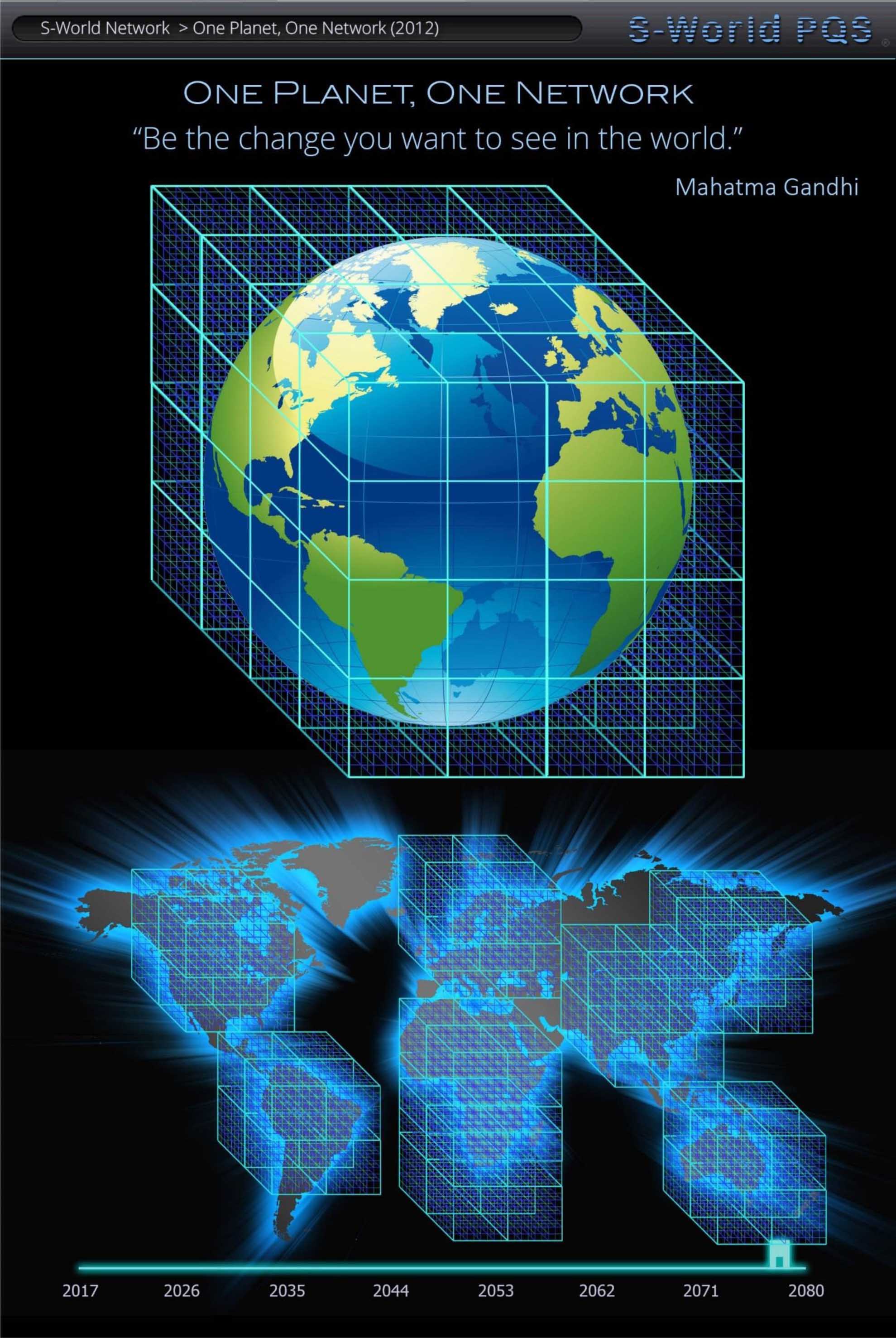
Supereconomics (2011 to 2020)
In 2011, during a conversation about predicting the future, a wise man introduced me to the following philosophical quote by Isaac Asimov.
“You may not predict what an individual may do, but you can put in motion things that will move the masses in a direction that is desired, thus shaping if not predicting the future.”
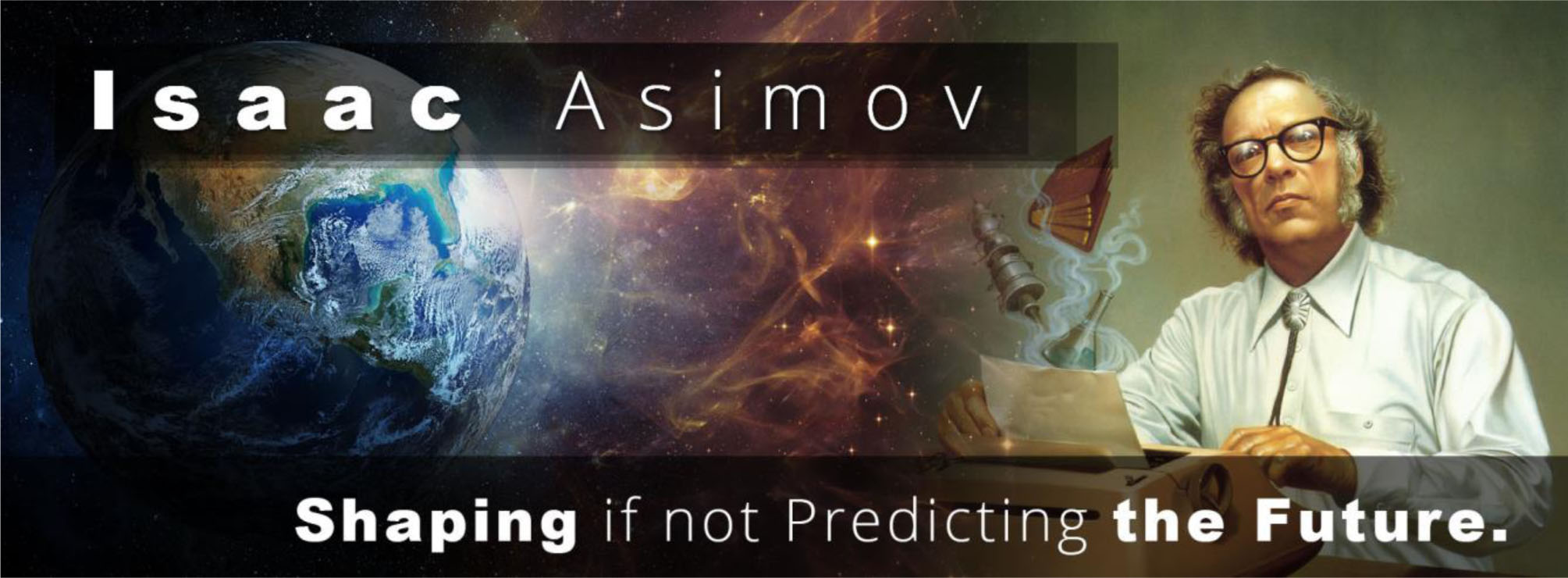
This philosophy became the S-World Network Mantra and is still at the heart of the system, and once we get past the indifference in the words, it makes a lot of sense. Consider the S-World Network and its component S-World UCS™ as-if they were a time machine, created to change the future, between now and 2080, pit stopping in 2024, 2032 and 2048 along the way.
For example, actions taken today that lower carbon emissions will change the future, take enough actions, and one can effect great change. Which brings us to money, if money were not a problem, we’d all stop burning focal fuels. But money is a problem unless you can perchance create a Supermonopoly.
A Supermonopoly?
At the heart of this economic system lays the Š-ŔÉŚ™ equation; when É equals 100% it’s a perfect monopoly, and when we whirl this economy round and round, faster and faster (Śpin 1 to 32) it creates financial symmetries of itself and becomes a Supermonopoly, racking up the cash flow and increasing the money supply by more than 3000%. It sounds like something you would get a fail on in a maths exam, but If you can pay tax in output and work in USD, not local currency, it works. Which brings us to the name Supereconomics.
The ‘Super’ in Supereconomics is a play on words of the theoretical physics of supersymmetry. I became enchanted with supersymmetry after hearing from Dr James Gates that he had found browser code in the fabric of space and time. This is not a copy of the code or the physics; it’s just the idea of clever sets of symmetries, the first of which is tax symmetry. Tax symmetry is where we build a city, then cites that in one way or another spend their money in ways that the government would itself chose, if only they had the money. That’s Tax Symmetry!
What makes it a ‘supersymmetry’ is that when we plug-in the S-World NetZero DCA™ Basic (Dynamic Comparative Advantage) Software, we can find a balance where most of what government choose as tax symmetry can be classed as special projects. Special projects are at the heart of our time travel addenda, by creating the core network as sets of ecological, philanthropic, social or complexity saving special projects, and use QuESC and commanders intent to drive the ship, the future will be markedly different, as the very fabric of the economy is created from the market, externalities and internalities of the 64 special projects.
This book then; The 64 Reasons Why – Summary; presents the special projects, it tells of how the massive Š-ŔÉŚ™ Supermonopoly profits (from Supereconomics 2) are spent in ways that see fifty to seventy-five percent of all the cash flow dedicated to these special projects.
That’s Supereconomics.
For the proofs, please go to page 17 – Š-ŔÉŚ™ Financial Engineering and read the next 746 Words to page 20. Then watch Video 34b to see its application over 60 years.
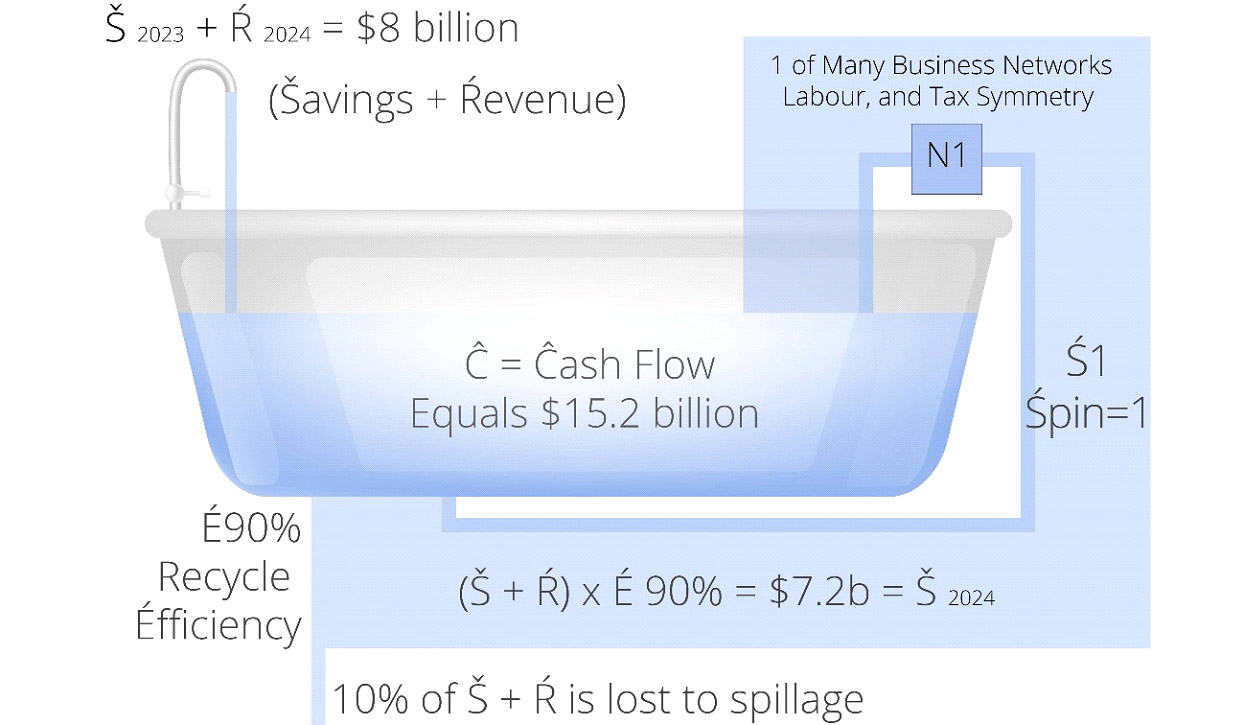
History 3
www.angeltheory.org/video/34b – Please watch this video

